How does oppression force people to either stay or move?
Historians often examine the issues that lead people to migrate in terms of "push-pull" factors. Were difficult times at home "pushing" people away or was the promise of better lives "pulling" them somewhere else? Usually the answer lies in a combination of both influences.
Oppression at home can be a powerful incentive to leave. Forced conscription into the military, restrictions on religious freedom, famines, laws prohibiting land ownership, high taxes, grinding poverty — these are factors that have often persuaded people to seek better lives elsewhere. Victims of violence or those fleeing conflict are often designated as refugees as opposed to immigrants coming for economic advantage. In recent times, wars in southeast Asia, Africa, the Middle East and Central America have dislocated millions and made refugee resettlement a major issue of our day.
Enslavement in America
Immigrants who come as enslaved people are a unique class. Africans forced into enslavement did not choose to migrate; their captors made that decision for them. They came as prisoners. In enslavement, one human being and his/her children become the legal property of another. Enslaved people labor for their owners. They have no or very few legal rights and are subject entirely to the will of those that enslave them. According to one source, slave ships brought 500,000 enslaved Africans to the United States. Those coming to America, however, represent less than 5 percent of the approximately 11.3 million Africans brought to the Western Hemisphere through the Atlantic slave trade. The majority went to island plantations in the Caribbean.
By 1861, sectional tensions in the United States finally culminated in the brutal Civil War. Enslavement was a primary cause of the conflict. Most northern states, including Iowa, prohibited enslavement. Four border states — Missouri, Kentucky, Maryland and Delaware — permitted the practice but refused to leave the Union. Slave states to the South seceded and formed the Confederate States of America. Enslavement did not find strong support in the U.S. territories in the West.
Most African Americans did not wait for the government to grant them their freedom. Wherever Union armies marched across the South, enslaved people left their homes and flocked to the Union camps. When U.S. enslavement of African Americans officially ended with the adoption of the 13th Amendment, some freed African Americans began moving north.
Great Migration and Iowa
In Iowa, small numbers of African Americans found jobs along the Mississippi River. They were sometimes recruited to replace white workers in meat-packing plants or coal mines, leading to hostile relations with local workers. While Iowa passed laws forbidding segregation in schools and public accommodations, they were often ignored or weakly enforced. Some towns, especially across southern Iowa, passed "sunset laws" that required all African Americans to leave town at the end of the day.
When World War I created shortages of labor in northern factories, many African Americans saw a chance to escape the heavily-segregated South. From 1900 to 1920, some one million African Americans moved North, most to large manufacturing cities where they competed with working class whites for jobs and housing. Tensions led to race riots in several cities and even the rise of the Ku Klux Klan in the Midwest. Even where segregation in housing was officially illegal, African Americans were nevertheless excluded from white neighborhoods. Some African-American areas grew into centers of distinct, vibrant black culture that gave rise to the flowering of arts, music and literature like the Harlem Renaissance in New York City.
By the 1970s, the demographics of African Americans had shifted remarkably. In 1900, 90 percent of African Americans lived in the South with 75 percent in rural areas. By 1970, only 50 percent of African Americans were southern, and only 25 percent lived in rural areas.
No other ethnic group in America has suffered discrimination more harshly than African Americans. With legal, economic and social restrictions, African Americans have struggled to achieve full equality in American society.
Supporting Questions
What is enslavement?
- Newspaper Ad for the Sale of Enslaved People at Ashley Ferry, ca. 1780 (Document)
- "The Resurrection of Henry 'Box' Brown at Philadelphia" Illustration, 1850 (Image)
- "Inspection and Sale of a Negro," 1854 (Image)
- Africans Imprisoned on the Slave Ship "Wildfire," 1860 (Image)
- Slave Auction Location along Whitehall Street in Atlanta, Georgia, 1864 (Image)
- African-American Family at the Hermitage in Savannah, Georgia, ca. 1907 (Image)
- "The Hermitage" Slave Quarters in Savannah, Georgia, ca. 1907 (Image)
- Interview of Formerly Enslaved Person Fountain Hughes, June 11, 1949 (Audio)
- Iowa Public Television's "The Underground Railroad," 1977 (Video)
- Iowa Public Television's "Iowa Underground Railroad Route," 1977 (Video)
How was our country divided during the Civil War?
- Preamble to the U.S. Constitution, September 1787 (Document)
- Northern and Southern States East of the Rocky Mountains, 1861 (Map)
- Iowan John Sivil Jr.'s Volunteer Enlistment Form during the Civil War, October 9, 1862 (Document)
- Final Draft of the Emancipation Proclamation, January 1, 1863 (Document)
- African-American Union Soldier, His Wife and Two Daughters, between 1863 to 1865 (Image)
- 13th Amendment to the U.S. Constitution, January 31, 1865 (Document)
- "The First Reading of the Emancipation Proclamation Before the Cabinet," 1866 (Image)
- "The First Vote," November 16, 1867 (Image)
How did oppression cause or motivate African Americans to migrate after the Civil War?
- "The Segregation Question" Letter to the Editor, February 22, 1915 (Document)
- Young African American Picking Cotton, October 1935 (Image)
- Family of Evicted Sharecroppers Resettled in Mississippi, July 1936 (Image)
- Sharecropper's Wife and Cabin near Jackson, Mississippi, June 1937 (Image)
- African-American Man Entering Movie House Through "Colored" Entrance, October 1939 (Image)
- Segregated Bus Station in Durham, North Carolina, May 1940 (Image)
- Segregated Cafe Near the Tobacco Market in Durham, North Carolina, May 1940 (Image)
- Rosa Parks Meeting Poster, between 1956 and 1959 (Document)
- Demonstrators during the March on Washington, D.C., August 28, 1963 (Image)
- Iowa Public Television's "Alexander Clark and the First Successful School Desegregation Case in the United States," 2012 (Video)
- "Great Migration | The African Americans," November 12, 2013 (Video)
- Dr. George Washington Carver, Date Unknown (Document, Image)
- Interview with George Jiggetts about Moving North and Finding Work, August 19, 1994 (Audio)
| Enslavement to the Great Migration Teaching Guide |
| Printable Image and Document Guide |
Dr. George Washington Carver, Date Unknown
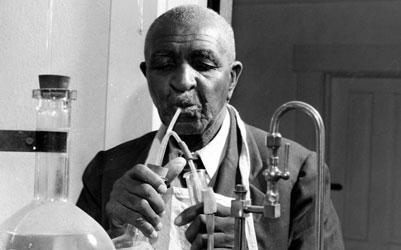
Download Resource Download Resource
Description
Dr. George Washington Carver was born into slavery at the end of the Civil War, and he became one of the best-known and widely respected African Americans in the world. As an agricultural chemist, he discovered 300 uses for peanuts and many uses for soybeans,…
"Great Migration | The African Americans," November 12, 2013
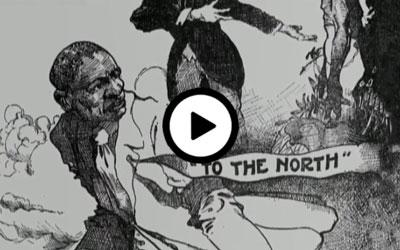
Description
The Great Migration was when African Americans left the South in large numbers for the North and West. This video is an excerpt from episode four of "Making a Way Out of No Way," which was from the series "The African Americans: Many Rivers to Cross" with Henry Louis…
Interview with George Jiggetts about Moving North and Finding Work, August 19, 1994

Description
This is an audio segment of an oral history interview with George Jiggetts. He discusses making no money in the South, so he sought work in the North in places like Philadelphia, New York and Baltimore. While he found "freedom" in some locations, he explains that he had…
Rosa Parks Meeting Poster, between 1956 and 1959
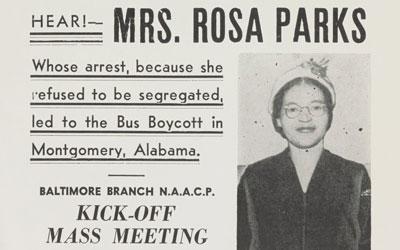
Description
The Montgomery Bus Boycott was a protest during which African Americans refused to ride city buses in Montgomery, Alabama, to protest segregated seating. The boycott took place from December 5, 1955, to December 20, 1956. Four days before the boycott began, Rosa Parks…
"The Resurrection of Henry 'Box' Brown at Philadelphia" Illustration, 1850
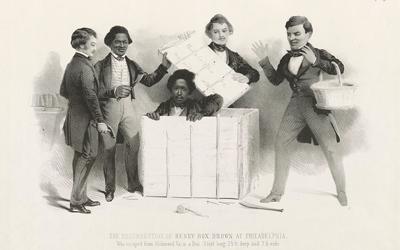
Description
Henry "Box" Brown was born enslaved in Virginia in 1815. He was sent to work in a tobacco factory and was taken from his family. But he was able to escape enslavement by mailing himself to a northern state. This illustration portrays the culminating episode…
"Inspection and Sale of a Negro," 1854
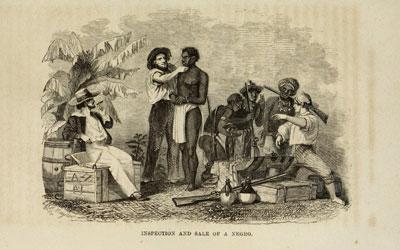
Description
Enslaved Africans were forced to come to America in 1619. First as indentured servants, and then as slaves. African slave traders brought enslaved people to be inspected along the Slave Coast of West Africa, put on ships and brought to the Americas.…
Newspaper Ad for the Sale of Enslaved People at Ashley Ferry, ca. 1780
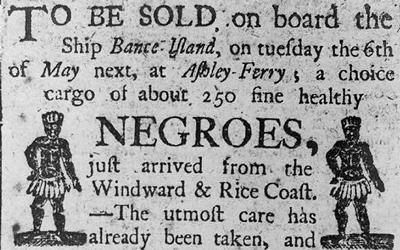
Description
Enslaved people were sold at auctions to individuals that bid the most money for them. Family members could be split up because a bidder may not want to buy the whole family, only the strongest, healthiest member. Slave auctions were advertised when it was known…
Africans Imprisoned on the Slave Ship "Wildfire," 1860
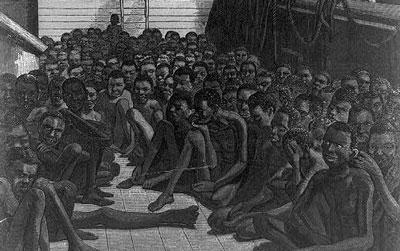
Source Description
Published in the June 2, 1860, issue of Harper's Weekly, "The Slave Deck of the Bark 'Wildfire'" showed how Africans were forced to travel on the upper deck of the ship. The illustration of the Wildfire is illustrating the 510 people that were enslaved and…
Slave Auction Location along Whitehall Street in Atlanta, Georgia, 1864
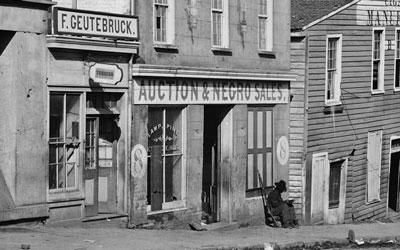
Description
This photograph was taken during the Union occupation of Atlanta, Georgia by George Barnard, the official photographer of the Chief Engineer's Office. The image shows an auction location that was used for the sale of enslaved Africans. When in use, the …
African-American Family at the Hermitage in Savannah, Georgia, ca. 1907
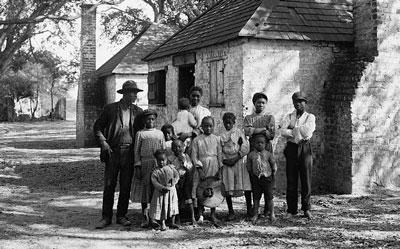
Description
This photograph shows a "whole black family" on the Hermitage Plantation in Savannah, Georgia around 1907. When slavery was legal, many enslaved people were separated from their families and other enslaved people on the plantation welcomed them as their own. Enslaved…
"The Hermitage" Slave Quarters in Savannah, Georgia, ca. 1907

Description
The photograph shows the former slave quarters or slave "houses" that were located on the Hermitage plantation in Savannah, Georgia. The quarters were located near the owner's "big house." Most quarters were made out of wood with dirt floors and possibly one window. The…
Interview of Formerly Enslaved Person Fountain Hughes, June 11, 1949
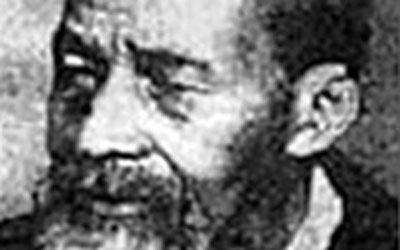
Description
Former enslaved person Fountain Hughes describes his life during the final years of slavery and after emancipation in an interview conducted by Hermond Norwood, a Library of Congress employee. The interview was conducted in Baltimore in 1949.
Iowa Public Television's "The Underground Railroad," 1977
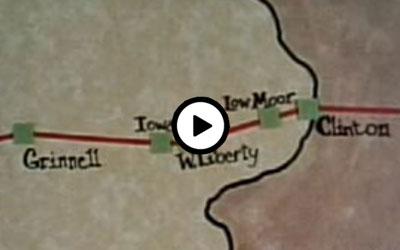
Description
This brief video excerpt from Iowa Public Television's "Civil War" program focuses on enslaved people seeking freedom through the Underground Railroad that included Iowa cities such as Tabor, Lewis, Des Moines, Grinnell, Iowa City, West Liberty, Low Moor and Clinton. Most of…
Iowa Public Television's "Iowa Underground Railroad Route," 1977

Description
This brief video excerpt from Iowa Public Television's "Civil War" program focuses on enslaved people seeking freedom through the Underground Railroad that included Iowa cities such as Tabor, Lewis, Des Moines, Grinnell, Iowa City, West Liberty, Low Moor and…
Preamble to the U.S. Constitution, September 1787

Description
The Preamble is the opening statement to the U.S. Constitution. The Preamble explains the reasons why the framers of the Constitution made our government a republic. The Preamble, along with the rest of the U.S. Constitution, was written over a period of about six weeks,…
Northern and Southern States East of the Rocky Mountains, 1861
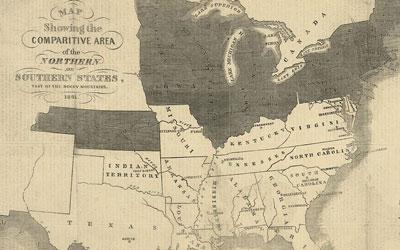
Description
This 1861 map shows the comparative area of the northern and southern states east of the Rocky Mountains. The Civil War lasted from 1861 to 1865. The North had a population of 22 million people to help work or become soldiers, with the South's population set at about 5.5…
Iowan John Sivil Jr.'s Volunteer Enlistment Form during the Civil War, October 9, 1862

Description
This volunteer enlistment form was for John Sivil Jr., from Farmington, Iowa. Sivil volunteered to enlist in the Civil War in 1862 as apart of the 37th Iowa Volunteer Infantry.
Final Draft of the Emancipation Proclamation, January 1, 1863

Description
President Abraham Lincoln issued the Emancipation Proclamation on January 1, 1863, as the nation approached its third year of bloody civil war. The proclamation declared "that all persons held as slaves" within the rebellious states "are, and…
African-American Union Soldier, His Wife and Two Daughters, between 1863 to 1865
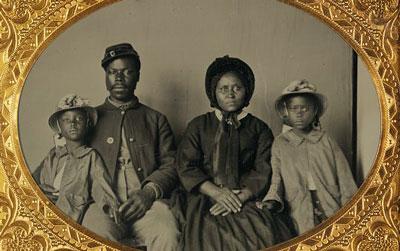
Description
In 1862, President Abraham Lincoln gave permission for African Americans to join the war effort, but Lincoln did not authorize use of African Americans to fight until the Emancipation Proclamation on January 1, 1863. He said, "And I further declare and make known, that such…
13th Amendment to the U.S. Constitution, January 31, 1865
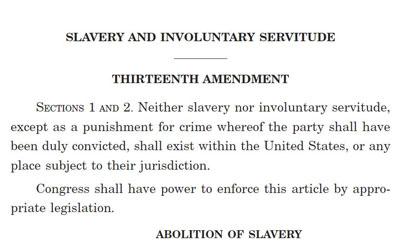
Description
The 13th Amendment made slavery illegal in the United States. It was adopted as part of the U.S. Constitution on December 6, 1865.
"The First Reading of the Emancipation Proclamation Before the Cabinet," 1866
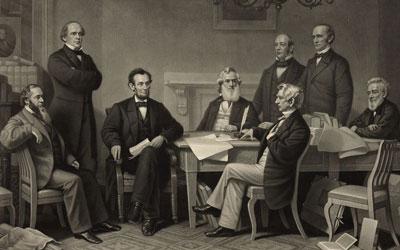
Description
This illustration portrays the first reading of the Emancipation Proclamation before President Abraham Lincoln's Cabinet. He presented the Proclamation to them on July 22, 1862, and issued the Proclamation on September 22, 1862. It took effect on January 1, 1863. Lincoln…
"The First Vote," November 16, 1867

Description
This print shows African-American men, in dress indicative of their professions, in a queue waiting their turn to vote. It was featured as the cover of Harper's Weekly. The 15th Amendment to the U.S. Constitution granted African-American men the right to vote…
"The Segregation Question" Letter to the Editor, February 22, 1915
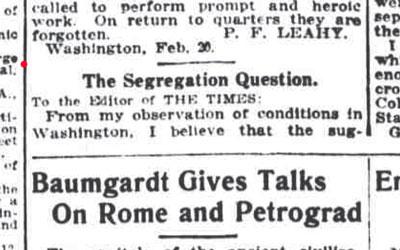
Description
This was a letter to the editor that was featured in The Washington Times. It was written by W.W.M. Clarendon from Virginia in support of Jim Crow Laws.
Young African American Picking Cotton, October 1935
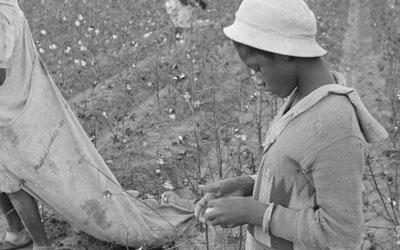
Description
Children were sharecroppers. Many did not go to school, and others that did could only attend after the picking season was over. If they were able to go to school, it was to segregated schools with few supplies and poor conditions. Many times, schools specifically for…
Family of Evicted Sharecroppers Resettled in Mississippi, July 1936
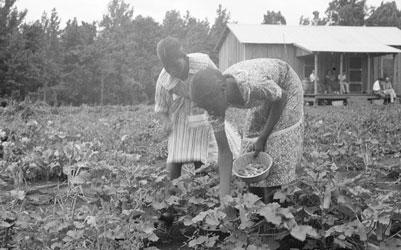
Description
Sharecroppers rented a plot of land and paid for it with a percentage of the crop, usually 50 percent. Sharecroppers would get tools, animals, fertilizer, seeds and food from the landlord's store and would have to pay him back at incredibly…
Sharecropper's Wife and Cabin near Jackson, Mississippi, June 1937
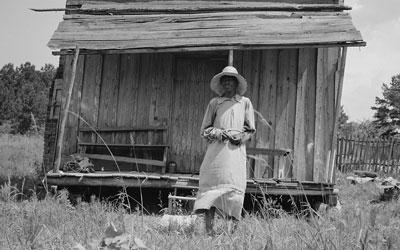
Description
The sharecropping system that replaced slavery kept formerly enslaved people poor and unable to gain enough money to purchase any land. The conditions remained extreme oppressive, similar to that seen during the days of slavery. This photograph is…
African-American Man Entering Movie House Through "Colored" Entrance, October 1939
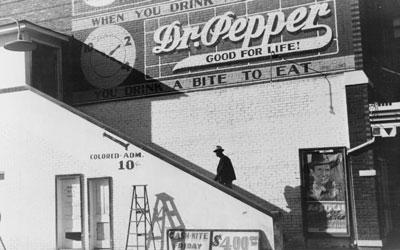
Description
This photograph shows an African-American man entering a movie theatre to the small balcony section in Belzoni, Mississippi. This photo was taken when Jim Crow laws were enforced in the South.
Segregated Bus Station in Durham, North Carolina, May 1940
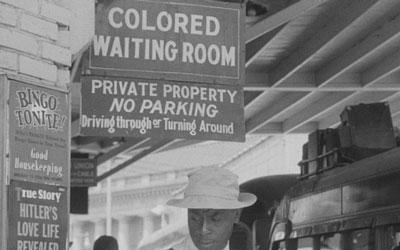
Description
Jim Crow Laws were enforced at bus stations and on buses. Freedom Riders were groups of white and African-American civil rights activists who organized Freedom Rides. These were bus trips through the American South in 1961 to protest segregated bus stations. Shown in the…
Segregated Cafe Near the Tobacco Market in Durham, North Carolina, May 1940

Description
Segregation is separation and could happen in restaurants, at drinking water fountains, using a public toilet, attending school, going to the movies, riding on a bus or in the rental or purchase of a home. After the 13th Amendment abolished slavery in…
Demonstrators during the March on Washington, D.C., August 28, 1963
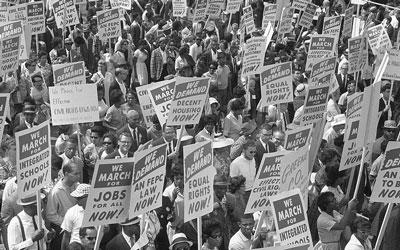
Description
The March on Washington was a protest march in August 1963, when 250,000 people gathered in front of the Lincoln Memorial in Washington, D.C. It was called the March on Washington for Jobs and Freedom as a protest to all the forms of oppression facing African Americans in…
Iowa Public Television's "Alexander Clark and the First Successful School Desegregation Case in the United States," 2012

Source Description
In 1867, an African-American businessman named Alexander Clark filed a lawsuit against the Muscatine, Iowa, school district for denying his daughter admission to a public school because she was African American. Clark won his lawsuit, but it was appealed by the school…
Additional Resources
What is enslavement?
- "Negro (The Word) A History"
This brief article from the African American Registry focuses on the meaning of the word over time. It provides some clarity and context on how to speak with your students about the word and its use throughout history. - Slavery in America
This webpage from the History Channel videos, photos and information on the history of enslavement within the United States. Topics are wide ranging and include info on the influence of the Missouri Compromise, the abolitionist movement, rebellions and the Civil War. - Recommended Books
How was our country divided during the Civil War?
- If You Lived at the Time of the Civil War by Anni Matsick
This book from the "If You" series describes what life was like during the time of the Civil War, from 1861 to 1865. Some of the questions include: would you have seen a battle, did you continue to go to school, was it hard to get food? - Draft of the U.S. Constitution
The U.S. Constitution went through several drafts before its completion. This document contains excerpts of a draft of the Constitution just a month and a half before the final document was completed. - The New Nation - The U.S. Constitution
This webpage from the Library of Congress reviews the drafting process and timeline required to create the U.S. Constitution. It also includes links to debates and addresses made that impacts the process of the document's drafting. - Preamble to the U.S. Constitution
This Library of Congress webpage reviews the preamble of the U.S. Constitution. The webpage focuses on making inferences about intent using two drafts of the U.S. Constitution. - Emancipation Proclamation Video
This video from the History Channel highlights the drafting, delivery and impact of the Emancipation Proclamation, delivered by President Abraham Lincoln during the Civil War.
How did oppression cause or motivate African Americans to migrate after the Civil War?
- The Great Migration Video
This video from PBS focuses on the period known as the "Great Migration," when 6 million African Americans from the rural South moved to the urban North. The video features artist Jacob Lawrence, who captured this story in an epic work of art known as the Migration Series. All 60 of Lawrence's small paintings were on show at the Museum of Modern Art in New York, with new reflections by 10 poets. - One-Way Ticket to Jacob Lawrence’s Migration Series
This website presents an interactive look at Jacob Lawrence's Migration Series, which was on show at the Museum of Modern Art in New York. The series looks the stories behind the "Great Migration," when 6 million African Americans from the rural South moved to the urban North. - Voting Rights Act of 1965 Video
This video from the History Channel focuses on the Voting Rights Act of 1965. Historian Yohuru Williams explains the events leading up to the passage of the Voting Rights Act in 1965 and the act's historical significance. - Bet You Didn't Know: Rosa Parks Video
This brief video gives a quick look at the origin of Rosa Parks' refusal to give her seat to a white passenger in 1955, which spurred the Montgomery Bus Boycott. Multiple African-American women had been arrested before her for the same action and being as active as she was with the NAACP, Parks and other civil rights activists were looking for different ways to address bus segregation. - Montgomery Bus Boycott Video
This video looks at the origin and impact of the Montgomery Bus Boycott, which was a civil-rights protest during which African Americans refused to ride city buses in Montgomery, Alabama, to protest segregated seating. The boycott took place from December 5, 1955, to December 20, 1956, and is regarded as the first large-scale U.S. demonstration against segregation. The boycott began because of Rosa Parks, an African-American woman who was arrested and fined for refusing to yield her bus seat to a white man. - Papers of Rosa Parks
This Library of Congress webpage features the papers of Rosa Parks, which span the years 1866-2006, with the bulk of the material dating from 1955 to 2000. The collection, which contains approximately 7,500 documents, as well as 2,500 photographs, focuses on Parks' private life and public activism on behalf of civil rights for African Americans. - 15th Amendment
Ratified in 1870, the 15th Amendment granted African-American men the right to vote. This online guide provides access to digital collections at the Library of Congress, external websites and print materials related to the amendment. - Sharecropping Video
This video from the History Channel looks at the rise of sharecropping after the Civil War. Sharecropping is a type of farming in which families rent small plots of land from a landowner in return for a portion of their crop, to be given to the landowner at the end of each year. With the southern economy in disarray after the abolition of slavery and the devastation of the Civil War, conflict arose during the Reconstruction era between many white landowners attempting to re-establish a labor force and newly-freed African Americans seeking economic independence and autonomy. - Alexander Clark and an African-American's Fight for Civil Rights
This website from Iowa Public Television (IPTV) looks at the impact of Alexander Clark, a prominent civil rights leader in Iowa. This collection of video segments from the Lost in History: Alexander Clark documentary explores Clark's historic court victory, his prominent anti-slavery role, his recruitment of African-American soldiers for the Union side in the Civil War and his appointment as a U.S. ambassador to Liberia. - "Greensboro Sit-Ins"
This article is about the Greensboro Sit-Ins, which were non-violent protests in Greensboro, North Carolina, that lasted from February 1, 1960 to July 25, 1960. The protests led to the Woolworth Department Store chain ending its policy of racial segregation in its stores in the southern United States. The Greensboro Sit-Ins were the first prominent sit-ins of the civil rights movement. - Recommended Books
Iowa Core Social Studies Standards (3rd Grade)
Listed below are the Iowa Core Social Studies content anchor standards that are best reflected in this source set. The content standards applied to this set are elementary-age level and encompass the key disciplines that make up social studies for third-grade students.
| No. | Standard Description |
| SS.3.8. | Describe the effects, opportunities, and conflicts that happened when people from different social groups came into contact with each other. |
| SS.3.9. | Compare and contrast the treatment of a variety of demographic groups in the past and present. |
| SS.3.10. | Explain how rules and laws impact society. (21st century skills) |
| SS.3.13. | Identify how people use natural resources, human resources, and physical capital to produce goods and services. |
| SS.3.19. | Create a geographic representation to explain how the unique characteristics of a place affect migration. |
| SS.3.21. | Use map evidence to explain how human settlements and movements relate to the locations and use of various regional landforms and natural resources. |
| SS.3.22. | Compare and contrast events that happened at the same time. |
| SS.3.24. | Infer the intended audience and purpose of a primary source from information within the source itself using textual evidence. |
| SS.3.28. | Explain the cultural contributions that different groups have made to Iowa. |